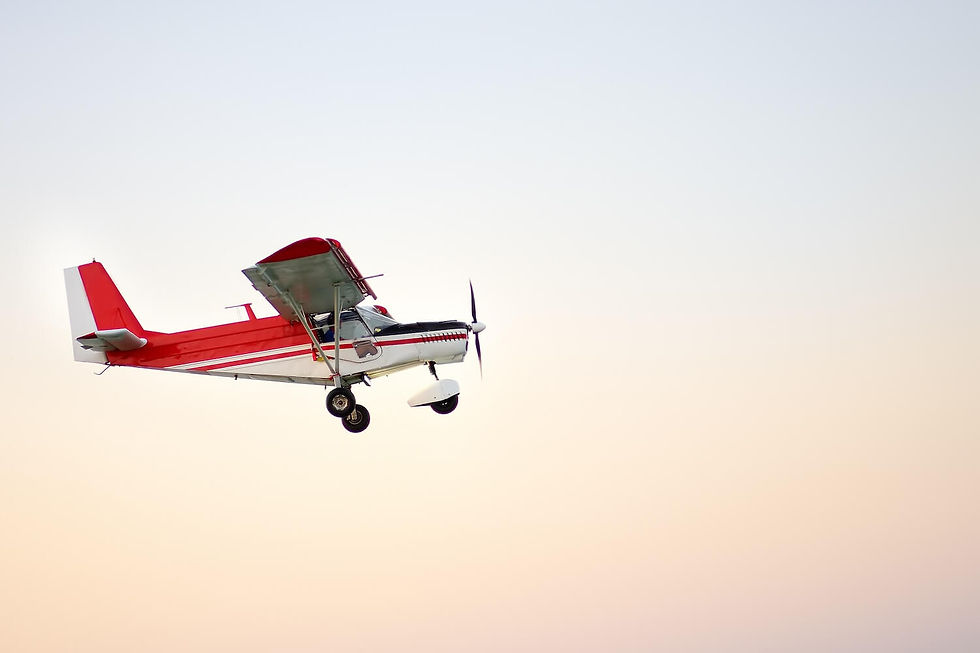Recurrent Training is For Everyone
- Mike Kloch

- Dec 20, 2019
- 4 min read
Updated: Sep 23
At my day job we give our customers recurrent training. Owners of turboprops and jets get annual recurrent training as it is usually required for insurance. Besides insurance requirements, recurrent training gives pilots a refresher on needed knowledge, profiles, procedures, etc. and provides challenges to a pilot’s flying skills (or at least it should). Recurrent training makes for a safer pilot (which is why insurance companies require it). So if this is so well known why don’t pilots of light GA aircraft get annual training? Because they get a Flight Review every two years? Well, yes, but is that enough for a pilot to be reasonably safe? I say not necessarily, and often no.
Think of the pilot who is a fair-weather only pilot, lives in the Northern latitudes and flies well less than 100 hours per year. This pilot may have several months of no flying due to winter weather, then once the good weather comes, he or she decides to start flying again, having barely thought about flying since the last time they flew. This is not a good recipe for safety, especially for the low time pilot. Of course this is only one of a thousand scenarios that create the reasons for one to get some extra training.
The thought of getting more training beyond the required biennial Flight Review should not deter anyone as the benefits can, and usually do, far outweigh the costs. An annual “tune-up” of one’s skills and knowledge can do a lot for proficiency and therefore increase safety. So find an appropriate instructor and get an annual flight review. When doing this, I recommend using a different instructor each time (or at least occasionally), therefore getting emphasis on different subjects. If you use the same instructor, at least ask them to give you a challenging workout. Unfortunately, I have seen many pilots who want to only do the minimums for a flight review. When your first concern is: can I get a flight review done in the minimum 1 hour of ground and 1 hour of flight, then I say your priorities need some improvement. When a customer wants to do only the minimum I will tell them that I will try to keep the review as short as possible but it may go longer if their knowledge or skills need work. Often the case is that the customer’s knowledge is lacking and we have to spend more time in the ground session to cover the required items and items I find necessary for safety.
At my day job when one from the pilot group gives a Flight Review or Instrument Proficiency Check to another (we do it annually), each of us sees it as a challenge. We like to play “stump the chump”, which is, can you come up with a question that I do not know the answer to or provide a flying situation that will challenge my skills (as long as it’s safe, of course)? This way we have an opportunity to learn and grow as a pilot. Often we learn or get refreshed on some knowledge item as each of us has our areas of deeper knowledge or specialization where we can share some interesting tidbit with the others.
Non-professional pilot should never think of flying as a hobby or just as a means of transportation, but as a second profession. The responsibilities of being a pilot are too great to not take it very seriously. Lives are at stake, literally. The sacred trust that passengers have in any pilot they fly with should never be in question. The general aviation mishap rate shows that there is still much room for improvement. There are many causal factors in aircraft mishaps but the most common factor is the pilot. I believe knowledge, training and better decision making can overcome many of the pilot-induced mishap factors and significantly reduce the accident rate. Luckily, much of that can be done at a very reasonable cost.
There are other ways to go about this idea of more training to increase your safety beyond spending some time with a CFI annually. How about enroll and participate in the FAA Wings program. This can be a great way to log some safety or skills related learning or training, and as I understand it, the FAA looks favorably upon pilots who participate in Wings when it comes to mishaps and violations. Someone who participates in the Wings program is showing that they care about safety. The FAA likes that.
Along with completing free online courses through Wings or the AOPA Air Safety Institute you can attend local seminars or work on some various skill-building challenges when you fly. A GA version of a Part 121/135 currency program would be great for safety (use the Wings program for this?). Of course not many pilots want to do a 6-month currency flight if they don’t have to but why not institute your own study program that has some milestones listed in it, such as: I will spend 30 minutes to 1 hour each in the POH, PHAK and FAR/AIM every 3 months. Couple that with a training flight every year (or even better, every 6 months) and eventually your knowledge and skills will likely be much better than they would have been otherwise. If you are not continually working to improve your skills, they are degrading.
All too often the excuse of “I don’t have time” is used. Really? How much TV do you watch? Watch 2 or 3 hours less per quarter and complete an online course or crack open the FAR/AIM, aircraft POH, etc. Regardless of the “I don’t have time” or I can’t afford it” excuses, you really should be asking how much is your life and the lives of those who fly with you worth?





Comments